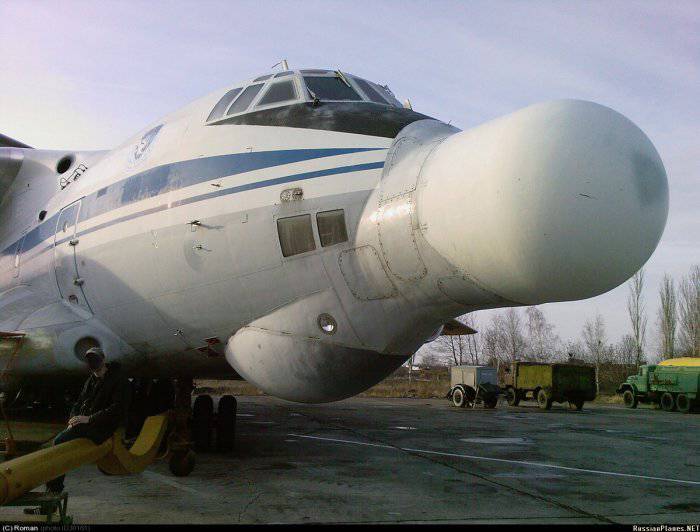Russia can shoot down American satellites with a laser beam ("Wired Magazine", USA)
At the beginning of the 80-s, Soviet engineers began to equip the IL-76 aircraft with laser guns. Two models rose in the air as part of the Falcon-Echelon development work. Supposedly, it was an attempt to create a counterbalance to the American efforts to develop a whole grouping of laser weaponscapable of destroying missiles. But with the collapse of the Soviet Union, the Falcon-Echelon program rested in Bose.
At least it seemed so at the time. But today there is more evidence that the Russian military has revived the laser project of the Soviet era. As reported by Space Review, in its new incarnation, the beam gun is aimed upwards - at American satellites.
In many ways, the plane of the Taganrog Aviation Complex named after Beriev A-60 resembles the American flying laser laboratory of the Airborne Laser Test Bed, which is a military Boeing-747 with a laser on board. Both aircraft have a bulbous fairing in the nose, and a rather strange hump in the upper part of the fuselage. The nose of the American laser laboratory opens so that the beam gun inside can hit the missiles approaching the target.
But in the nose of A-60 there are no visible holes. Instead, there is "a large thickening in the upper rear of the aircraft, similar to the sliding doors of a laser turret with a 1 megawatt capacity," space history historian Dwayne A. Day wrote in Space Review. “The laser is specifically designed to shoot up at something that is above the plane, but not sideways and not down - at ground targets and at other aircraft.”
The emblem on board the aircraft makes it possible to guess what the target should hit this plane. It depicts a falcon, shooting down a spacecraft that flies over the North Pole in the direction of Russia. Day says this is the Hubble space telescope.
A statement made last year by an unnamed representative provides new evidence. According to him, the A-60 system "is designed to transmit laser energy to remote objects in order to counteract the enemy's opto-electronic means." In other words, the laser should blind American spy satellites.
This idea is not as fantastic as it may seem at first glance. In 1984, the Soviets directed the laser to the Challenger space shuttle, considering it to be an orbital reconnaissance satellite. As reported in the Jane's Intelligence Review, the laser "caused problems with the space shuttle and the crew’s indisposition." In 2006, China also shot from the ground with a laser at American satellites, temporarily disabling the American "cosmic eyes."
 Photos of the resurrected Russian laser gun began to appear in 2009 year. By the summer of 2010, Pravda had already openly praised work on the creation of an "air-based military laser based on Il-76, designed to counter enemy reconnaissance equipment in various conditions." Russian life boss Vladimir Putin led talks about equipping Israeli unmanned aerial vehicles with “space and laser equipment”.
Photos of the resurrected Russian laser gun began to appear in 2009 year. By the summer of 2010, Pravda had already openly praised work on the creation of an "air-based military laser based on Il-76, designed to counter enemy reconnaissance equipment in various conditions." Russian life boss Vladimir Putin led talks about equipping Israeli unmanned aerial vehicles with “space and laser equipment”.It is unclear how far the Russians have advanced in the development of a beam laser gun. But paradoxically, while the A-60 program is gaining momentum, the US flying laser lab program is slowing down. Whole Creation Plans fleet B-747 with beam guns was reduced to a single aircraft, and this aircraft during the test misfires. So the Russians need to be careful that the Americans do not spy on their project. After decades of development work and billions of dollars spent, the American flying laser never learned to shoot accurately at the target.

Information